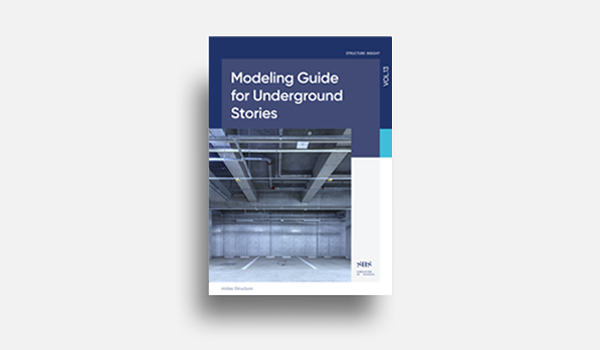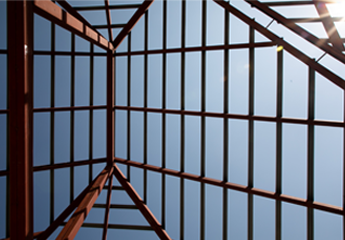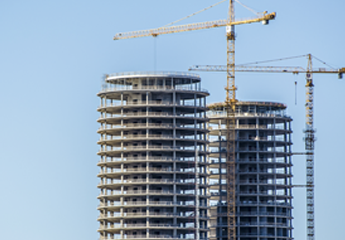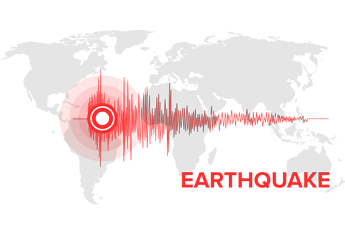OVERVIEW
Underground stories (basement floors) are not influenced by lateral loads, and these basement stories may be separately considered from the overall structure. The underground stories should be considered, however, when the self-weight of the above-ground stories is transmitted or they are an integral part of the lateral load resisting system.
Reasonable judgment is required in order to obtain the correct results when performing eigenvalue analysis of a structure, or when analyzing lateral loads such as wind loads or seismic loads. The following sections will explain how this can be achieved using midas Gen.
The following cases are examples showing how underground stories interact with the entire structure:
Consideration of the Ground Level when Analyzing Wind Loads
Model > Building > Control Data > Check box Use Ground Level > Define Ground Level
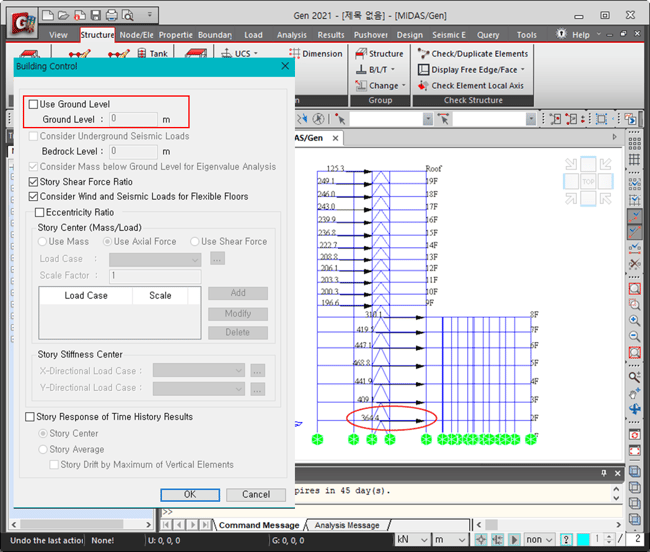
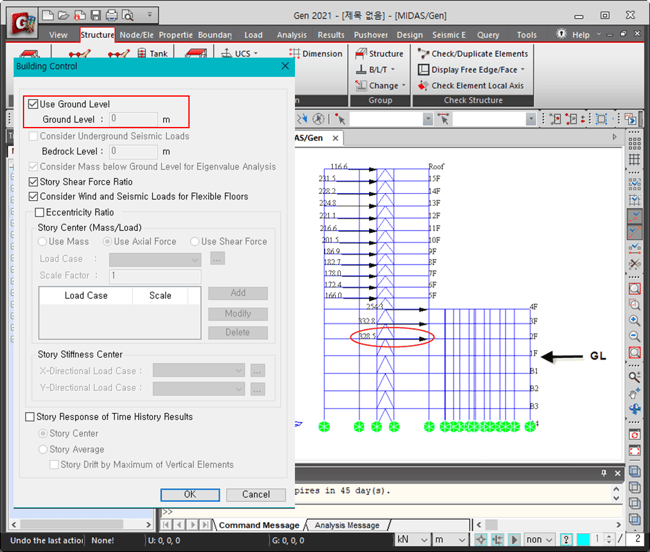
Wind loads and static seismic loads are applied to a structure based on the height of the ground level, as shown in Figure 2. The horizontal loads, in this case, are not applied to the underground stories. The case in which the ground level is not specified is shown in Figure 1.
 Figure 3. Wind Load Generation per Story
Figure 3. Wind Load Generation per StoryReferring to Figure 3, a wind load of 409.2 kN at the 2nd basement story (B2) is lumped at the floor level, which is calculated from a pressure force on the building between lines A and B. These lines correspond to the half the height of each story.
The wind load at the 3rd basement story (B3) is also calculated using the same method for the B2 story. Below the B3 story, a wind load should be applied to the base; however, support conditions restrict any application of a wind load. midas Gen, therefore, ignores the wind load applied to the base.
Support conditions are entered by selecting the Model > Boundaries > Supports function. During the analysis of the wind load, an output message is presented in the Command Message window, as shown in Figure 4, indicating that the wind load is automatically excluded at the base due to the support conditions.

When a ground floor is defined for a structure, shown as in Figure 2, the wind load that should be applied at the ground level is excluded, and wind load application starts at the 2nd story. In this example, the ground floor is set as 1F. When midas Gen automatically generates stories for a structure with a defined ground level, the ground level will be set as 1F.
Figure 5 shows the dialog box for the Wind Load Profile, verifying that the wind load is applied to the story diaphragm starting from the 1st story.
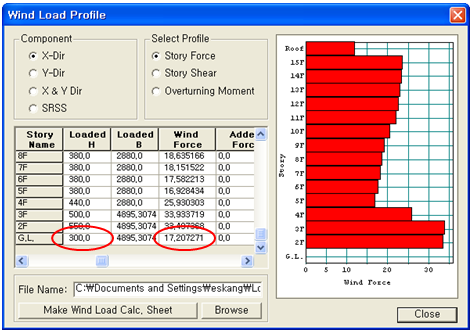
Consideration of the Mass below Ground Level during Eigenvalue Analysis
Model > Building > Control Data
Check on/off the box
Consider Mass below Ground Level for Eigenvalue Analysis
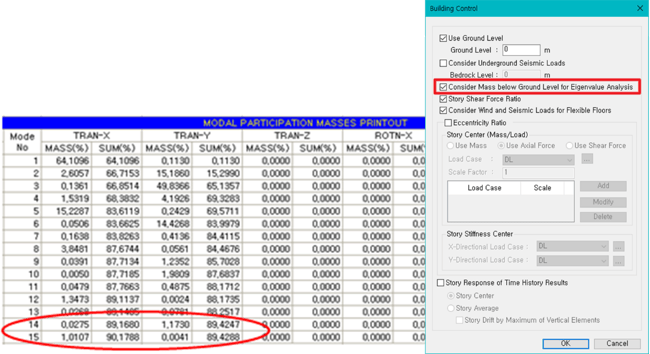 Figure 6. Inclusion of the Mass below Ground Level for Eigenvalue Analysis
Figure 6. Inclusion of the Mass below Ground Level for Eigenvalue Analysis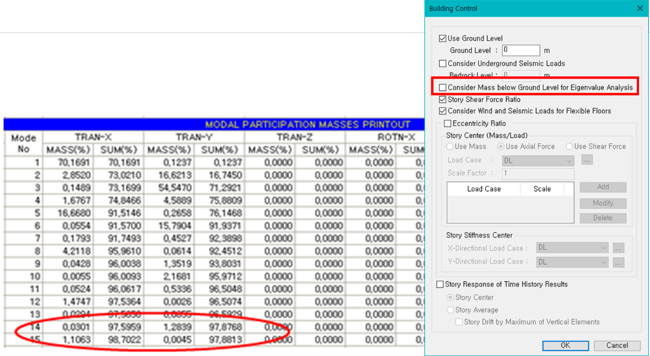
The values of the modal participation masses change, as shown in Figures 6 and 7, depending on the consideration of the masses of the underground levels for eigenvalue analysis. The inclusion of the masses of the underground levels to the entire effective mass can affect the results considerably.
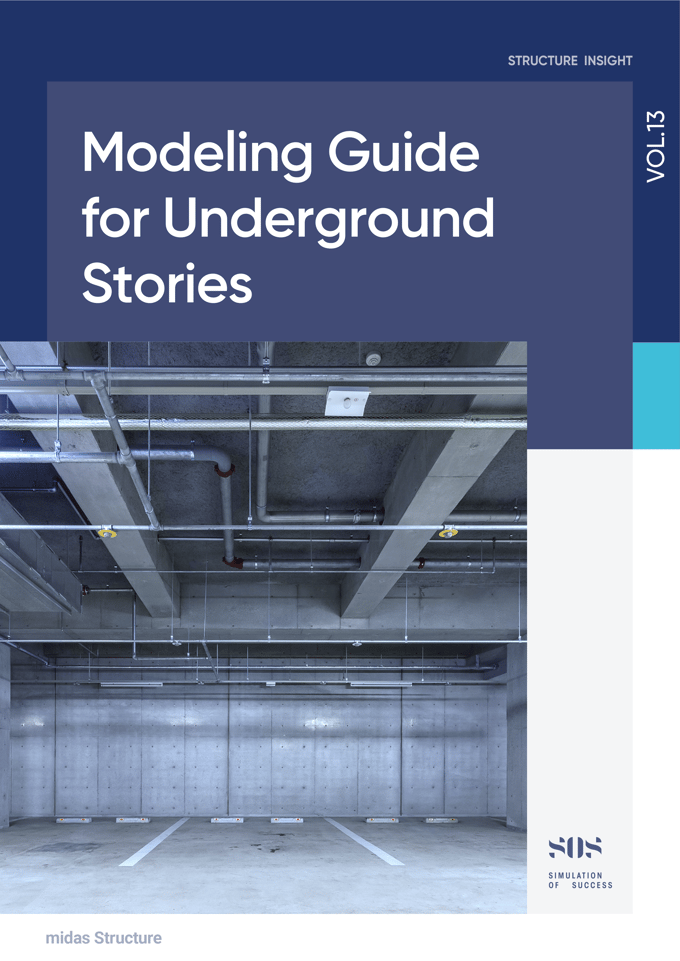
Please download White Paper VOL.13 for Modeling Guide for Underground Stories below to see the full contents.
 Banner Title Products
Banner Title Products



